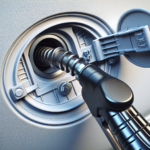So, you find yourself in a situation where you need to handle and navigate through areas with limited depth or shallow waters. Whether you’re on a boat or simply trying to maneuver through a shallow area, it can be quite a challenge. But fear not, as this article is here to provide you with some helpful tips and tricks on how to successfully tackle these tricky situations. From understanding the depth of the water to adjusting your approach and techniques, we’ve got you covered in making your way through these challenging areas.
Understanding Limited Depth Areas
Definition of Limited Depth Areas
Limited depth areas, also known as shallow waters, refer to areas of a body of water where the depth is significantly reduced compared to the surrounding area. These areas often have less than average water depth and can pose navigational challenges for boaters and sailors. Limited depth areas can be found in various bodies of water, including coastal regions, lakes, rivers, and canals.
Factors Affecting Limited Depth Areas
Several factors contribute to the existence of limited depth areas. These include natural aspects such as tidal movements, sedimentation, and erosion. Tidal movements can create shifting sandbars or expose hidden rocks, making the water shallower than usual. Sedimentation refers to the accumulation of sediment, such as sand or mud, which can reduce water depth over time. Erosion caused by natural processes or human activities can also lead to limited depth areas by removing sediment and exposing underlying substrate.
Navigation Challenges in Limited Depth Areas
Navigating through limited depth areas can present a range of challenges for boaters. The primary challenge is the risk of grounding, where the boat’s keel or hull touches the bottom due to insufficient water depth. Grounding can cause damage to the vessel and potentially strand the boaters until the water level rises. Limited depth areas may also contain submerged obstacles such as rocks, logs, or underwater vegetation, which increase the risk of collisions. The constantly changing nature of limited depth areas makes it crucial for boaters to stay alert and adapt their navigation techniques accordingly.
Preparing for Navigation in Shallow Waters
Assessing Water Depth and Conditions
Before venturing into limited depth areas, it is essential to assess the water depth and conditions. This can be done by consulting nautical charts, which provide information on water depths, obstructions, and navigational aids. Additionally, depth sounders or fish finders are valuable tools that measure the water depth beneath the boat in real-time. Understanding the current depth and predicting changes in water levels due to tides or other factors can help boaters plan their route effectively and avoid shallow areas.
Understanding Local Regulations and Restrictions
Each region may have specific regulations and restrictions regarding navigation in limited depth areas. It is crucial to familiarize yourself with these regulations to ensure compliance and prevent any legal issues. Some areas may have speed limits or designated channels for navigation. Others may have protected marine areas where special restrictions are in place to preserve sensitive ecosystems. Researching and understanding these local regulations will enhance safety and help protect the environment.
Choosing the Right Vessel
When navigating limited depth areas, it is important to choose a vessel suitable for shallow waters. Boats with a shallow draft, meaning they have a minimal distance between the lowest point of the boat and the waterline, are ideal for navigating in shallow waters. Flat-bottomed boats or those with retractable keels can also be advantageous as they can navigate through shallow waters with ease. Selecting the right vessel ensures maneuverability and reduces the risk of grounding or damage to the boat.
Essential Equipment and Tools
Navigational Charts and Maps
navigational charts and maps provide crucial information for safe navigation in limited depth areas. These charts display water depths, marine hazards, navigational aids, and other useful information. They help boaters plan their route, identify potential shallow areas, and avoid obstacles. Navigational charts should be updated regularly since water depths can change due to natural processes or human activities. It is essential to carry an up-to-date chart specific to the area you intend to navigate.
Depth Sounder
A depth sounder, also known as a depth finder or fish finder, is a valuable tool for boaters navigating in shallow waters. This device uses sonar technology to measure the water depth beneath the boat in real-time. It displays the depth on a screen, allowing boaters to precisely gauge the depth and identify any sudden changes. Depth sounders are particularly useful in limited depth areas where the depth can vary rapidly. Investing in a reliable depth sounder can significantly enhance navigation safety.
GPS and Sonar Systems
GPS (Global Positioning System) and sonar systems are indispensable tools for navigating in limited depth areas. GPS provides accurate positioning information, allowing boaters to track their location and plan their route effectively. Sonar systems, combined with GPS, can create detailed bathymetric maps, which show water depth contours and underwater features. This information helps boaters identify safe channels, avoid shallow spots, and navigate with confidence. Having these systems onboard ensures precise navigation and mitigates the risks associated with limited depth areas.
Navigational Techniques
Slowing Down and Maintaining Proper Speed
One of the fundamental techniques for navigating in limited depth areas is to slow down and maintain an appropriate speed. Slowing down reduces the impact if the boat encounters an obstacle or shallower water suddenly. It also allows boaters to have better control of the vessel and react promptly to changing conditions. Maintaining a proper speed ensures that the boat does not create excessive wake, which can cause damage to sensitive shorelines or disturb wildlife. Adhering to speed limits, if applicable, is vital for both safety and environmental conservation.
Following Marked Channels
Marked channels serve as designated routes for safe navigation through limited depth areas. These channels are typically indicated by navigational buoys or markers, which guide boaters along the deepest and safest sections of the waterway. It is important to familiarize yourself with the meaning of different markers and understand their placement. Following marked channels minimizes the risk of grounding or encountering submerged hazards, as these routes are regularly surveyed and maintained by marine authorities.
Understanding Tidal Patterns
Tidal patterns play a significant role in limited depth areas, particularly in coastal regions. It is crucial to understand and navigate according to the prevailing tidal conditions. High tide provides greater water depth, allowing for safer navigation in shallow areas. Conversely, low tide exposes more of the seabed, increasing the risk of grounding. Consulting tide tables, which provide information on the times and heights of high and low tides, helps boaters plan their navigation and avoid challenging tidal conditions. Being aware of tidal patterns ensures safer and more efficient navigation in limited depth areas.
Maneuvering in Shallow Waters
Trimming Your Boat’s Outboard Motor
Trimming the outboard motor can significantly impact maneuverability in shallow waters. By adjusting the trim, the angle between the outboard motor and the boat’s transom, boaters can optimize their boat’s performance in limited depth areas. In shallow waters, raising the motor slightly reduces the risk of striking the bottom, allowing boaters to navigate through shallow spots. However, it is important to find the right balance, as excessive trimming can result in a loss of control. Adjusting the outboard motor’s trim based on the water depth and conditions ensures better maneuverability and prevents damage to the motor.
Raising the Outboard Motor
In extremely shallow waters, where even trimming the outboard motor may not be sufficient, boaters can consider raising the motor completely. Some boats are equipped with tilt and trim mechanisms that allow the outboard motor to be raised vertically, effectively “lifting” it out of the water. Raising the outboard motor eliminates the risk of striking the bottom and provides the shallowest possible draft. However, this maneuver should only be performed when the water depth is minimal, and caution should be exercised to maintain stability and prevent tilting.
Using Tiller Extensions
For boats with tiller-controlled outboard motors, using a tiller extension can aid navigation in shallow waters. A tiller extension is essentially a long handle that extends the reach of the tiller, allowing boaters to control the outboard motor from a more advantageous position. By using a tiller extension, boaters can move away from the transom and have a better view of the water ahead, enabling them to navigate through shallow areas more effectively. Tiller extensions provide enhanced maneuverability and allow for quick adjustments in shallow water conditions.
Avoiding Groundings and Collisions
Constant Vigilance and Scanning
Maintaining constant vigilance and scanning the surrounding waters are crucial for avoiding groundings and collisions in limited depth areas. being aware of your surroundings and continuously scanning for any potential hazards or changes in water depth can help boaters navigate safely. This includes scanning the water surface for submerged obstacles, observing changes in color or texture that may indicate shallower areas, and looking out for other vessels or watercraft in the vicinity. By remaining alert and attentive, boaters can react promptly and make necessary course adjustments to avoid groundings and collisions.
Reading the Water Surface for Obstacles
In limited depth areas, it is important to develop the skill of reading the water surface for potential obstacles. Submerged obstacles such as rocks, logs, or underwater vegetation may not be visible below the waterline. However, their presence can often be detected by subtle changes in the water surface. Ripples, waves breaking, or disturbance in the water’s color may indicate the presence of shallows or obstacles. By closely observing these surface indicators, boaters can anticipate and avoid potential obstructions, ensuring a safe and smooth navigation experience.
Avoiding Soft Mud or Sand
Navigating in shallow waters may expose boaters to soft mud or sand, which can be particularly challenging. These soft substrates can cause the boat to get stuck or sink if not approached cautiously. To avoid such situations, it is important to identify areas with soft mud or sand and avoid them if possible, especially if the boat has a shallow draft. In case the boat does encounter soft substrates, reducing speed and carefully maneuvering through them can help minimize the risk of getting stuck. It is crucial to consult navigational charts, local knowledge, or seek advice from local authorities to identify areas prone to soft mud or sand.
Handling Unexpected Challenging Situations
Dealing with Unexpected Shallow Spots
Encountering unexpected shallow spots while navigating can be disorienting and potentially hazardous. In such situations, it is important to remain calm and take immediate action to minimize the risk of grounding. Slowing down the boat and carefully maneuvering away from the shallow area is the first step. If the water continues to get shallower, consider reversing your course. Communication with other boaters in the area, if available, can provide valuable information on alternative routes or safe passages. Being prepared for unexpected shallow spots and knowing how to react promptly can help avoid potential accidents or damage to the boat.
Encountering Weeds, Sandbars, or Rocks
Weeds, sandbars, and rocks are common obstacles encountered in limited depth areas. When boating through shallow waters, it is important to watch out for signs of these obstacles and take appropriate action. Weeds can clog propellers and reduce maneuverability, so it is advisable to slow down or choose an alternate route. Sandbars can be identified by changes in water color and texture, and boaters should navigate around them to avoid grounding. Rocks may be visible or hidden beneath the water’s surface, and caution should be exercised to steer clear of them. Familiarizing yourself with the area and using navigational aids will assist in avoiding encounters with these obstacles.
Strategies for Navigating Strong Crosswinds
Navigating in limited depth areas becomes even more challenging when faced with strong crosswinds. Crosswinds can push the boat off course, making it difficult to maintain control and stay within safe channels or routes. To navigate successfully in such conditions, it is important to adopt effective strategies. Adjusting the boat’s trim can help counteract the wind’s effects and maintain stability. Utilizing engine power and steering into the wind can also assist in maintaining control. However, extreme caution should be exercised, and if the conditions become too dangerous, it may be wise to seek shelter until the winds subside. Keeping a close eye on weather forecasts and having a contingency plan in case of strong crosswinds is essential for safe navigation.
Safety Measures in Limited Depth Areas
Wearing Life Jackets and Floatation Devices
Safety should always be a top priority when navigating in limited depth areas. Wearing life jackets or personal flotation devices (PFDs) is crucial to ensure the safety of everyone onboard. In the event of a grounding, collision, or unexpected accidents, life jackets keep individuals afloat and reduce the risk of drowning. It is important to choose properly fitting and Coast Guard-approved life jackets and ensure that they are readily accessible for all occupants of the boat, including children. Wearing PFDs increases the chances of survival in emergency situations, providing peace of mind while navigating through shallow waters.
Carrying Essential Safety Gear
Boaters should carry essential safety gear to handle emergencies and unexpected situations in limited depth areas. This gear includes but is not limited to first aid kits, emergency flares, fire extinguishers, whistles or horns for signaling, and anchor systems. First aid kits can provide immediate medical attention in case of injuries, while flares and signaling devices can attract attention and alert nearby vessels or authorities. Fire extinguishers are crucial for dealing with onboard fires, and whistles or horns can be used to communicate distress signals. Anchoring systems are essential for securing the boat in case of engine failure or other emergencies. Carrying and knowing how to use this safety gear enhances preparedness and enables efficient response to emergencies.
Communicating and Signaling
Maintaining proper communication and signaling methods is essential for safety in limited depth areas. Boaters should have a reliable means of communication, such as marine VHF radios or cell phones, to contact emergency services or other boaters in case of distress. It is crucial to know the designated emergency channels and adhere to proper radio etiquette. Signaling devices, such as handheld flares, visual distress signals, or distress flags, should be readily available and in good working condition. Proper communication and signaling systems ensure that assistance can be summoned promptly and efficiently, increasing the chances of a successful outcome during emergencies.
Understanding and Respecting Marine Life
Avoiding Damage to Coral Reefs and Seagrass Beds
Limited depth areas often host fragile marine ecosystems, such as coral reefs and seagrass beds. These habitats are vulnerable to damage caused by boating activities. It is essential to navigate with care and avoid direct contact with these delicate ecosystems. Anchoring should be avoided in areas with seagrass beds to prevent damage to the seafloor and disturbance to marine organisms. When snorkeling or diving, it is important to anchor yourself away from coral reefs to prevent accidental contact and potential destruction of coral colonies. Respecting and protecting these habitats ensures their long-term survival and the preservation of marine biodiversity.
Minimizing Disturbance to Wildlife
Limited depth areas are often home to diverse marine wildlife. To minimize disturbance to these creatures, boaters should practice responsible boating behavior. Maintaining a safe distance from marine animals, including dolphins, manatees, or nesting birds, is crucial to prevent stress and disruption to their natural behaviors. Avoid excessive noise, especially near resting or breeding areas, as sudden loud sounds can startle or harm wildlife. It is important to adhere to regulations concerning protected species and understand the specific guidelines for each region. By respecting and protecting marine wildlife, boaters can contribute to the conservation of these precious natural resources.
Responsible Fishing Practices
Limited depth areas often attract recreational and commercial fishermen due to the abundance of fish and other marine species. When fishing in these areas, it is essential to practice responsible and sustainable fishing practices. Familiarize yourself with local fishing regulations, including catch limits, size restrictions, and seasonal closures. Use barbless hooks to minimize injury to fish, and handle fish with wet hands to prevent damage to their protective slime coating. If catch and release fishing, handle fish gently and return them to the water as quickly as possible. By respecting fishing regulations and implementing responsible practices, boaters can contribute to the long-term health of fish populations and aquatic ecosystems.
Conclusion
Navigating through limited depth areas requires careful planning, attention to detail, and adherence to safety measures. Understanding the definition and factors affecting limited depth areas is the first step towards safe navigation. Assessing water depth and conditions, understanding local regulations, and choosing the right vessel are essential preparations. Equipping yourself with navigational tools and techniques, such as charts, depth sounders, and following marked channels, enhances navigation safety. Maneuvering in shallow waters requires adjusting the outboard motor’s trim, raising it if necessary, and using tiller extensions. To avoid groundings and collisions, constant vigilance, reading the water surface, and avoiding soft mud or sand are crucial. Handling unexpected challenging situations, such as dealing with shallow spots, encountering obstacles, and navigating strong crosswinds, requires swift and informed actions. Implementing safety measures, understanding and respecting marine life, and practicing responsible fishing contribute to environmental conservation. The key to safe navigation in limited depth areas lies in continuous learning and improvement, emphasizing safety, and conserving these delicate ecosystems for future generations.





